Long-established technology of Coordinate Measuring Machines (CMM) is being challenged in various markets by fast-emerging, highly advanced science of blue light scanning.
By Matthew Martin, Exact Metrology
For more than 50 years, the benchmark for accuracy in measuring solid objects, whether machined, molded, die cast, welded or forged, was the coordinate measuring machine. Using a solid granite base table typically, along with a vertical, horizontal, gantry or bridge-mounted arm and touch probe, measurements would be taken and compared in blocks to an engineering file, first as 2D drawings and now as CAD files hosted in the cloud.
During the last two decades, however, a “new kid in town” has arrived with power, size, point capability and price value that are rapidly leaving the CMM technology in the dust.
3D laser scanning, plus the latest trend of industrial CT scanning, which is based on the same technology used for medical MRI, permit an array of points to be read, both external and now internal, on a variety of substrates and manufacturing techniques. 3D scans are made on many types of metals, composite, thermoplastic, elastomeric, wood, fiber and fabric materials, while CT scanning permits internal exploration of a thick aluminum casting, injection molded plastic or rubber part, even prepared foods, packaging, archaeological finds and fine art. The old joke is that with CT scanning, we would have known about Venus de Milo’s arm problems long before they occurred. CT scanning can produce results for porosity, dimensional, failure analysis, volume and fiber orientation, all while leaving the part undamaged.
In contrast to conventional tactile CMM techniques, laser and especially CT scanning captures all surface points simultaneously, on even the most complex, convoluted surface areas. As an example, where a typical touch probe might capture 300 points of reference for comparison to a CAD overlay, the laser or CT will capture millions of points. Typical systems today can offer measurement accuracies to 4+L/100 µm referring to the VDI 2630 metrology guideline.
A customer recently came to us with the following scenario. An engineer at his company boasted of having produced the “perfect part,” based on CMM deviation points. Our contact had used our scanning services in the past. We performed a quick blue light 3D scan on the object and quickly determined the part was out of spec on several faces, as certain critical points had been missed in the CMM protocol. Our millions of scan data points were fit to the deviation map and the problem was tracked backed to the production source and rectified. Today, this company is a regular customer.
3D laser scan can capture millions of points, instantly comparing them to a CAD file or cloud-resident data.
The above example does not indicate CMM technology has outlived its usefulness, by any means. We continue to use it in our operations for certain measurements in many applications.
One important point to note is that the same software that manipulates the data from the CMM can be used with 3D scanners and CT equipment alike. As there are substantial cost savings to be realized in the purchase of a 3D scanning device or the new generation of table top CT scanners, depending on the parts being examined, the transition from CMM to 3D or CT is more feasible today, economically. The driving factors for a company, when evaluating the service vs. purchase issue are two.
CT scan enables the internal examination of a die cast, molded or other solid part, even food and packaging, to detect issues of porosity or void analysis without destruction of the object, as well as seal integrity.
The easier factor is raw cost, where a 3D scanner is typically half the cost of a CMM for measuring comparable part sizes. The other is more complex, namely the talent of the personnel doing the work. Experienced technicians have the ability to scan and process large data sets on a variety of substrates, geometries and part sizes effectively. Coupled with the part volumes being processed and other factors, it is often more practical and profitable for a company to use a scanning service on an as-needed basis.
An additional point to note in evaluating CMM vs. scanning is the time involved. To derive those 300 touch points referenced above might take four hours, while the 2.5 million points derived from a 3D scan would take 30 minutes. Since Polyworks software can be used on a CMM or 3D laser scanner, the time and money savings quickly accumulate. Plus, in this manner, companies can develop something of a “universal metrology” scenario at their companies by augmenting the existing CMM technologies with 3D and even CT scanning capabilities, making their QC department more powerful from the outset. One practical note: We can train QC, R&D and production department personnel usually in three days or less to expand their capability from CMM to include 3D and CT scanning.
3D printing allows quick sampling of modified designs, as well as finished prototypes, producing parts directly from the scanned data.
In terms of the data created, the 3D scanning produces color maps, inspections, first article inspections or other outputs. What you do with the data after completing the scanning is endless.
On the topic of substrates, it should be noted that CT scanning today offers the ability to evaluate a variety of dual thickness and dual density materials, with disparate examples ranging from an automotive firewall that might have differing thermoplastics or rubber and TPE materials co-molded to a candy bar with chocolate and nuts.
Exact Metrology, Inc.
www.exactmetrology.com
The author welcomes all contact and questions regarding this article. In full disclosure, Exact Metrology performs 3D laser and CT scanning, plus sells, rents or leases the equipment to perform such scanning procedures. Matthew Martin, Exact Metrology, Inc., [email protected]
Filed Under: 3D printing • additive • stereolithography, Die casting, Materials • advanced, MOTION CONTROL

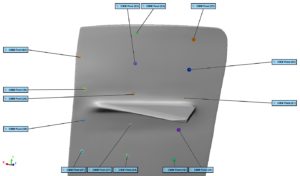
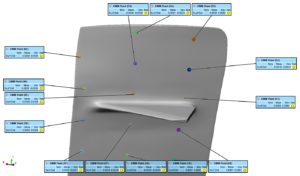
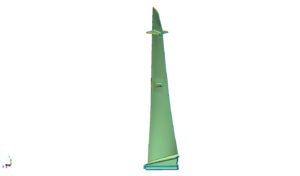
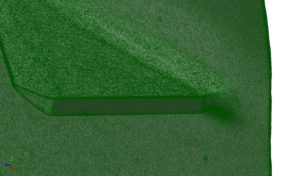
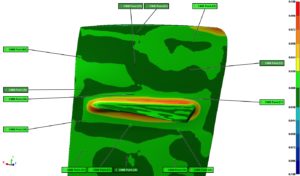


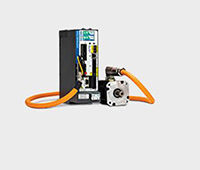

Tell Us What You Think!